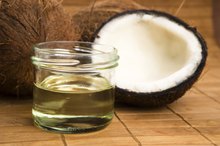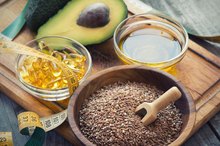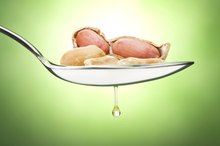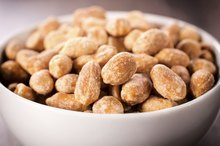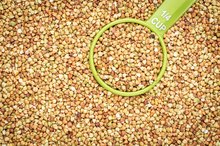Foods Rich in Plant Sterols
Plant sterols provide one primary benefit: They help lower cholesterol. The National Heart, Lung and Blood Institute reports that adding 2 grams of plant sterols to your daily diet may lower cholesterol by 5 to 15 percent. The challenge is getting enough sterols in your diet to have an impact. Most foods are not naturally rich sources of these phytosterols.
Phytosterol Functions
The sterols produced by plants are similar to cholesterol in structure and function. During digestion, phytosterols displace cholesterol, so more dietary cholesterol is eliminated from your system rather than absorbed into your blood stream. All plant-based foods contain phytosterols, but only in small amounts. For example, many fruits and vegetables have about 0.01 to 0.03 grams per serving. It’s difficult, if not impossible, to consume 2 grams daily through a typical diet, according to a study in the January 2010 issue of the “American Journal of Clinical Nutrition.”
Vegetable Oils
List of Foods With Essential Fatty Acids
Learn More
As a group, vegetable oils are one of the best sources of phytosterols. A 1-tablespoon serving of sesame oil, corn oil and canola oil has 92 to 118 milligrams of phytosterols. The amount of phytosterols is usually reported in milligrams, which makes it seem as though they are rich sources. These values only equal about 0.1 gram per tablespoon, however, which means you would need to consume 20 tablespoons of vegetable oil to reach 2 grams of phytosterols.
Wheat Germ and Wheat Bran
If you eat one-half cup of wheat germ, you’ll get 0.2 grams of phytosterols. The same portion of wheat bran has half that amount. The advantage of getting plant sterols from wheat germ and wheat bran is that they’re rich sources of fiber, which also lowers cholesterol. One-half cup of wheat germ has 9 grams of fiber, while wheat bran has 13 grams. Women should consume 25 grams and men need 38 grams of fiber daily.
Nuts and Legumes
Foods With Plant Sterols & Stanols
Learn More
The Linus Pauling Institute reports that peanuts have 0.1 grams of phytosterols in a 1-ounce serving. The same portion of other types of nuts, such as almonds, cashews, pecans, walnuts and macadamia nuts, only supplies 0.03 to 0.04 grams, according to the USDA Beltsville Human Nutrition Research Center. You’ll get about 0.1 gram of phytosterols from a one-half cup of peas, kidney beans and broad beans. The fiber in beans and unsaturated fats in nuts also help lower levels of cholesterol.
Fortified Foods
The average amount of phytosterols consumed through a regular diet is less than 0.5 grams daily, notes the Cleveland Clinic. You can boost your intake by taking supplements or using fortified foods. Try replacing butter or margarine with sterol-fortified spreads. Some dairy products, orange juice, breads and ready-to-eat cereals are also fortified. Check the label on the products you buy because they may contain anywhere from 0.4 to 1.7 grams or more of sterols per serving.
Related Articles
References
- National Heart, Lung, and Blood Institute: National Cholesterol Education Program: Your Guide to Lowering Cholesterol With Therapeutic Lifestyle Changes
- Linus Pauling Institute: Phytosterols
- Cleveland Clinic: Phytosterols: Sterols and Stanols
- American Journal of Clinical Nutrition: Dose Effects of Dietary Phytosterols on Cholesterol Metabolism -- A Controlled Feeding Study
- Dietary Fiber Food: List of Foods (With High Phytosterol) That Help Lower Serum Cholesterol
Writer Bio
Sandi Busch received a Bachelor of Arts in psychology, then pursued training in nursing and nutrition. She taught families to plan and prepare special diets, worked as a therapeutic support specialist, and now writes about her favorite topics – nutrition, food, families and parenting – for hospitals and trade magazines.



